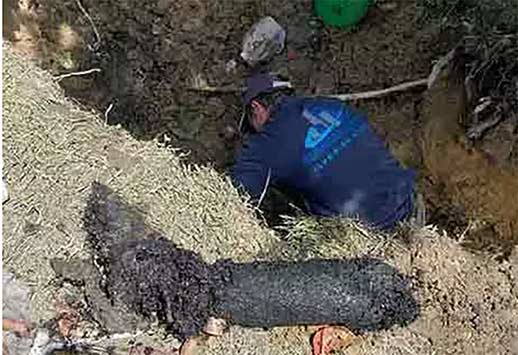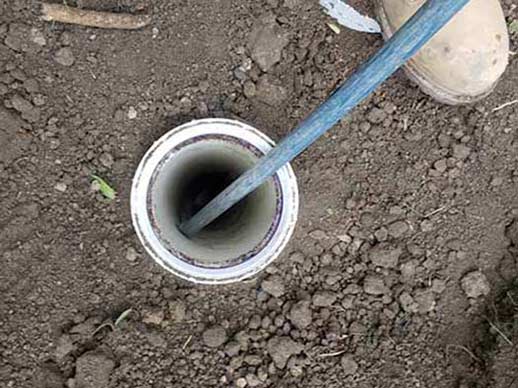If you’re facing drainage issues in your property due to tree roots infiltrating your drainage system, you’ve come to the right place. Below we will provide you with valuable insights, tips, and steps to effectively remove tree roots and restore proper drainage in Chicago. Whether you’re a homeowner or a plumber, this guide will equip you with the knowledge you need to address this common problem.
The Importance of Drain Cleaning
Drainage systems play a critical role in maintaining the overall health of a property. They ensure the efficient removal of wastewater and prevent water from accumulating, which can lead to serious damage and health hazards. However, tree roots can be a major obstacle in maintaining a fully functional drainage system. Their natural inclination to seek moisture and nutrients can cause them to invade your pipes, leading to clogging and blockages.
When left unaddressed, tree root intrusion can result in costly repairs and even structural damage. It is crucial to identify and resolve drainage issues caused by tree roots as soon as possible to minimize the long-term effects on your property.
Understanding Tree Root Intrusion
Tree roots are attracted to the moisture and nutrients found within drains and sewer lines. Their powerful growth can exert significant pressure on your pipes, leading to cracks, breaks, and leaks. Once inside the pipes, the roots can expand and form a dense web that traps debris and causes further blockages.
In Chicago, the most common culprits for tree root intrusion are city-owned trees, such as Silver Maples and Willows, as their root systems can be extensive and persistent. However, even trees in neighboring properties can potentially cause problems if their roots manage to reach your drainage system.
Signs of Tree Root Intrusion
It’s essential to be aware of the signs that indicate tree root intrusion in your drains. By recognizing these early warning signs, you can take proactive measures to address the issue before it escalates. Some common signs to look out for include:
- Slow draining sinks, showers, or toilets
- Gurgling noises coming from plumbing fixtures
- Foul odor emanating from drains
- Multiple drain clogs throughout your property
- Visible cracks or pipe damage
- Signs of water pooling or dampness in unexpected areas
If you notice any of these signs, it’s crucial to take action promptly to prevent further damage to your drainage system.

In many cases, professional drain cleaning services can effectively remove tree roots and restore proper drainage without the need for tree removal.
Tree Removal vs. Drain Cleaning
When faced with tree root intrusion in your drains, you may wonder whether tree removal is necessary. While removing the tree may seem like a logical solution, it is not always the most practical or feasible option. Here are a few factors to consider:
- Property ownership: If the tree causing the issue is located on public property, such as a sidewalk, it is the responsibility of the city to address the situation. However, trees on private property are the owner’s responsibility.
- Tree value: If the tree holds significant value, such as rare or mature species, removing it should be a last resort. Explore alternatives, such as drain cleaning, before deciding to remove the tree.
- Environmental impact: Trees are vital for maintaining a healthy ecosystem. Removing a tree can have ecological consequences, and it’s important to consider the environmental impact before taking action.
In many cases, professional drain cleaning services can effectively remove tree roots and restore proper drainage without the need for tree removal. This ensures a win-win situation, allowing you to preserve the tree while resolving the drainage issue.
Hiring a Professional Drain Cleaning Service
While some homeowners may attempt DIY drain cleaning and tree root removal, it is often more efficient and effective to hire a professional drain cleaning service in the case of tree root intrusion. Here are a few reasons why:
- Expertise: Drain cleaning professionals have the knowledge and experience to assess the situation accurately and provide targeted solutions. They can identify the extent of tree root intrusion, determine the best course of action, and employ specialized services such as hydro jetting to remove the roots.
- Preventive measures: Professionals not only address the immediate issue but also offer preventive measures to minimize the likelihood of future tree root intrusion. This may include regular maintenance, the installation of root barriers, or other proactive solutions tailored to your specific property.
- Time and effort: Tree root removal can be a labor-intensive process, especially if the roots have spread extensively. By hiring professionals, you can save time and energy while ensuring the job is done efficiently.
- Safety: Working with drain cleaning equipment, such as high-pressure water jetters, requires proper training and precautions. Professionals are equipped with the necessary safety gear and know-how to handle potential hazards.
When selecting a professional drain cleaning service in Chicago, be sure to choose a reputable company with a track record of successfully addressing tree root intrusion. Reading customer reviews and seeking recommendations from trusted sources can help you make an informed decision.

Once the affected areas have been identified, the technician will employ various methods to remove the tree roots. This may include using high-pressure water jetters, mechanical augers, or chemical root treatments.
The Drain Cleaning Process
Now let’s dive into the actual process of removing tree roots from your drainage system. While each case may vary in terms of complexity, the following steps provide a general overview of how drain cleaning professionals approach tree root intrusion:
- Initial assessment: The drain cleaning technician will conduct a thorough assessment of your drainage system to identify the location and extent of tree root intrusion. This may involve using specialized cameras or locating equipment to inspect the pipes.
- Root removal: Once the affected areas have been identified, the technician will employ various methods to remove the tree roots. This may include using high-pressure water jetters, mechanical augers, or chemical root treatments. The choice of method depends on the severity of the intrusion and the condition of the pipes.
- Pipe repair or replacement: In some cases, tree root intrusion may have caused significant damage to the pipes, necessitating repairs or replacements. The technician will assess the extent of the damage and recommend the appropriate course of action. This may involve patching up cracks, relining the pipes, or replacing sections of the sewer line.
- Preventive measures: After removing the tree roots and restoring proper drainage, the technician may suggest preventive measures to avoid future issues. This may involve installing root barriers, regularly maintaining the pipes, or offering advice on landscaping practices that minimize tree root intrusion.
- Follow-up inspections: To ensure the effectiveness of the drain cleaning process, it is common for professionals to conduct follow-up inspections after a certain period. This allows them to verify if any further root intrusion has occurred and take corrective action if needed.
Maintaining a Root-Free Drainage System
Removing tree roots from your drains is just the first step in ensuring a root-free drainage system. To prevent future tree root intrusion, consider implementing the following practices:
- Regular drain maintenance: Routine drain maintenance, such as periodic cleaning and inspections, can help identify and address potential issues before they escalate.
- Root barriers: Installing root barriers near drainage systems can provide an additional layer of protection against tree root intrusion.
- Strategic landscaping: When planting trees or shrubs, consider the distance from drainage systems. Select species with non-invasive root systems, and avoid planting them too close to pipes.
- Avoiding harmful substances: Certain substances, such as grease, oil, and chemical drain cleaners, can damage pipes and contribute to blockages. Dispose of these substances properly and use drain-friendly products.
In Conclusion
Dealing with tree root intrusion in your drainage system can be a challenging task, but with the right knowledge and approach, you can effectively resolve the issue. We hope that this guide has provided you with valuable insights and guidance on how to remove tree roots in Chicago. Remember, when in doubt, it is always best to speak with a professional drain cleaning service to ensure a thorough and lasting solution. By taking proactive measures and maintaining a root-free drainage system, you can protect your property and enjoy efficient wastewater removal for years to come.